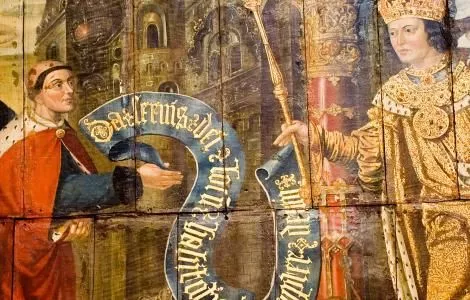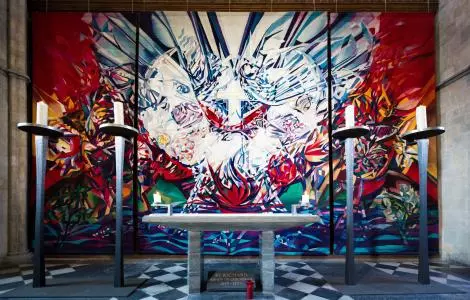The best way to discover this glorious building is to come along and join one of our guided tours but for now - here is a little history...
We are committed to becoming carbon neutral and recognise the Christian duty to care for God’s creation.
The best way to discover this glorious building is to come along and join one of our guided tours but for now - here is a little history...

The monastery founded by St Wilfrid in 681 near the coast in Selsey, 10 miles from Chichester, was to become the first Cathedral in Sussex.

Following the Norman Conquest of 1066, it was deemed by the Council of London that cathedrals situated in remote locations should be moved to more populous areas and so, in 1076, the See of Chichester was established and the bishopric moved to the old Roman city of Chichester. Using stone from Quarr on the Isle of Wight, construction began in 1075 on a new Cathedral, overseen by Stigand, the first Norman bishop.

Chichester Cathedral was eventually completed by Bishop Ralph Luffa, and consecrated in 1108.
However, a series of devastating fires in 1114 and 1187 saw the destruction of the Cathedral’s wooden roof and eastern end. In its place, Bishop Seffrid II built a stone-vaulted roof and remodelled much of the building. The cathedral was then re-consecrated in 1199.

A vitally important figure in the Cathedral’s history is Richard of Wych, bishop of Chichester from 1245 - 1253, who was canonized by Pope Urban in 1262 for his holy works and miracles. In 1276, when Richard’s body was moved, or ‘translated’, from its first burial place in the chapel of St Thomas and St Edmund to the Retroquire the service drew great crowds, including the new king, Edward I.

Around 1400, the Cathedral’s spire, cloisters and Bell Tower were built. Chichester is unique in having the only surviving detached medieval bell tower, situated by the Cathedral’s western end.
An early display of the importance of art to the Cathedral can be seen in the Cathedral’s South Transept.
Measuring 14ft by 32ft and painted on oak planks, Lambert Barnard’s two great panels of history painting were commissioned by Bishop Robert Sherburne in the 1530s and depict two vignettes, alongside a set of portraits of English monarchs. The scenes take as their subject a history of the Cathedral in miniature, from Selsey to Chichester, and the current monarch of the age, Henry VIII, confirming the rights and royal protection of the bishopric. Its portrayal of royal authority and protection is a rare and valuable example of propaganda painting from the era and confirms its importance as among the most important Tudor ecclesiastical art anywhere in the country.

St Richard’s shrine continued to attract dedicated pilgrims until it was destroyed in 1538 during the violent turmoil of the Reformation. Since the nineteenth century, depictions of St Richard have returned to the Cathedral and in 1930 an altar was restored to the original site of his shrine.
Now, almost 800 years after his death, St Richard of Chichester is patron saint of Sussex and his translated saint's day of 16 June is celebrated as Sussex Day. St Richard is often now remembered through his popular prayer.

The outbreak of the English Civil War in 1642 saw Parliamentary forces take control of the city, ransacking Chichester Cathedral in the process. It took until after the Restoration of the monarchy in 1660 for a programme of restoration to be instigated and undo the damage done.
Serious cracks appeared in the masonry and the Cathedral’s Tower and Spire collapsed in 1861. A programme of rebuilding overseen by Sir George Gilbert Scott took over 5 years before both were repaired and the Cathedral was able to fully reopen for worship in 1866.

The twentieth century saw the Cathedral move boldly into the world of modern art with the commissioning of pieces by respected artists such as Graham Sutherland, John Piper and Marc Chagall. These, and many other pieces, are on permanent display.

After almost one thousand years situated in the city of Chichester, the Cathedral is a vital part of the local community - as a place of worship, a place of tourism and heritage, a place for music and the arts, and a place for exploration and learning.
This ancient Cathedral relies on donations, please give generously. Your contribution - however large or small - is gratefully received.